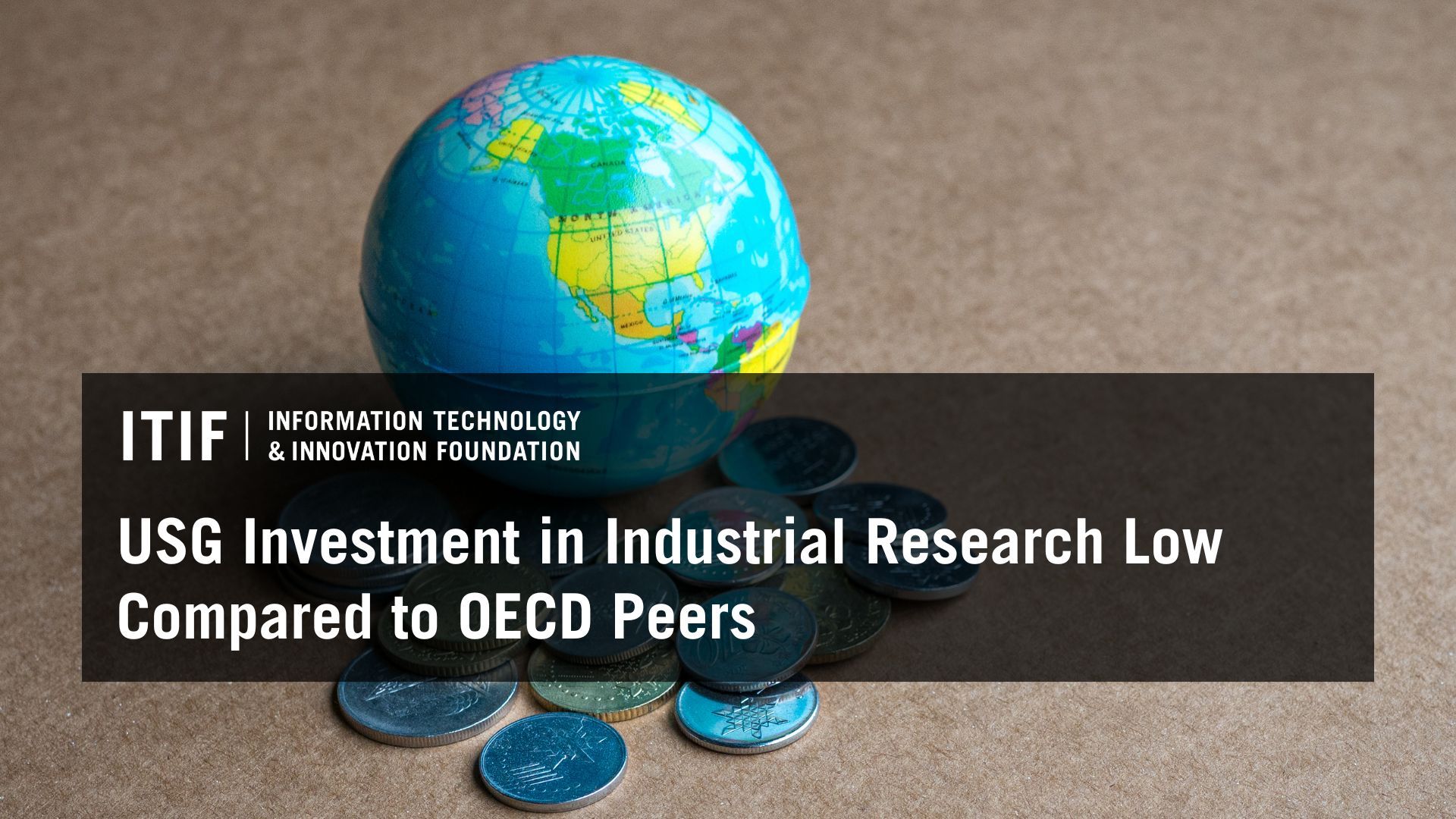The OECD classifies national R&D investment by focus area, such as defense, environment, and health. “Industrial production and technology” refers to research aimed at increasing economic efficiency and competitiveness. This includes, for example, R&D to develop new machinery or production processes that enhance manufacturing output. Such investments are critical, enabling national industrial competitiveness.
A few countries invest a relatively large share of their overall government R&D budgets in industrial production and technology, such as Iceland, Israel, and Belgium (each investing 33 percent or more). While the overall OECD average is 12 percent, the United States invests far less, ranking 34th out of 36 OECD countries.
The U.S. government invests just over 1 percent of its federal research budget in industrial production and technology. For comparison, the United Kingdom invests 5.5 percent, Australia invests 6 percent, and Canada invests 12.5 percent. (See figure 1.)
Figure 1: Share of total federal R&D invested in industrial production and technology (2024, unless otherwise noted)
*: 2023 data used for Chile, Israel, and Korea; 2022 data used for Canada and UK; 2020 data used for Colombia
To avoid losing even more industrial competitiveness to China, the United States must boost government R&D investment and devote a significant share of that increase to industrial production and technology. A reasonable goal would be to invest at least 10 percent of its federal research budget by 2028. Absent such a shift, China will continue expanding its lead in the technologies that determine future industrial capacity and geopolitical leverage, leaving the United States less able to compete.
